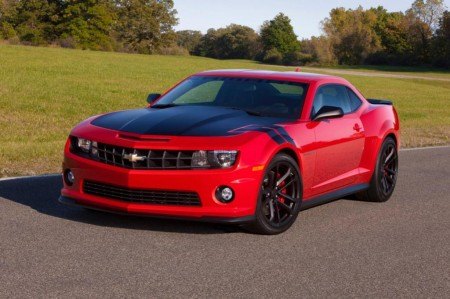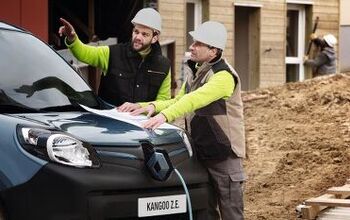Canadian Government Investigating Price Discrepancies For New Cars
Every Canadian consumer knows that when it comes to new car prices, we get screwed. Yes, Canada is a small market with higher taxes. It costs more to do business here in part because the high distribution costs can’t be amortized over 300-odd million people. In addition, things like metric instruments further complicate things.
But then there’s the question of why a Toyota RAV4, built two hours outside of Toronto, costs $2,890 less in Hawaii than it does in Canada. Why does an Oshawa-built Camaro demand a $4,685 premium in Canada? Where does BMW get off charging a $19,300 premium in the Great White North for a 535i xDrive, a 38.9 percent increase over the U.S. sticker?
The price discrepancy issue was the subject of a report by Canada’s Senate. Other consumer items like books and sporting goods were also investigated, but cars were a central focus. Interestingly enough, certain vehicles are actually cheaper to buy in Canada; these tend to be compact cars like the Honda Civic and Toyota Corolla, which are popular with Canadians and built in Ontario.
Not so for other segments, like sports cars and luxury vehicles. The report mentions that consumers in Canada looking for these vehicles will pay the price that “the market will bear”. Translation: f**k you, we know we can gouge you, so we’ll do it. Of course, it’s the right of every business to set their own prices and earn a profit, which is precisely what makes it so difficult for the government to do anything about this matter. On the other hand, the compact segment is ultra-competitive in Canada, so it’s in the OEM’s interest to make sure the vehicles are priced competitively. But even mainstream cars like the Dodge Charger, built in a suburb of Toronto, can be as much as 20 percent higher in Canada than in the United States.
Some of the suggestions laid out for lowering vehicle prices, like lowering certain tariffs may help lower the prices, but some experts interviewed in the report suggested that it was doubtful that the savings would be passed onto consumers by the OEMs. For domestic vehicles, it’s hard to imagine the government being able to do anything. Price controls for Camaros would be a farce, especially for a government as committed to free-market principles as the current Conservative government. Ultimately, it’s unlikely that the government will be able to do anything about it, though there’s one “left-field” savior that is just crazy enough to possibly make a difference.
One aspect that got a brief mention was the harmonization of safety standards between Canada and the U.S. Currently, Canada uses the FMVSS standards with a couple minor variations, and the OEMs have long used this compliance as an excuse for high MSRPs. What will really be interesting is if the proposed Canada-EU free trade deal leads to a harmonization between Canada and the UN/ECE standards. One complaint among Canadian car enthusiasts and OEMs has been that Canada’s market tastes have long been aligned with Europe, but the FMVSS-based standards mean that homologating European compact cars has been far too expensive. Meanwhile, Australia, which uses the UN standards and has a comparable market size to Canada, gets all manner of cars that North American enthusiasts can only fantasize about.
Imagine if the EU Free Trade deal opened the floodgates to a whole new swath of product for Canadian consumers? It may not make the Camaro any cheaper, but the amount of available models would increase exponentially, and auto makers would no doubt try and take advantage of the altered regulations to bring better-suited product to Canada. It’s hard to imagine greater overall choice not having any positive effect on vehicle prices. But then again, with things currently as nonsensical as they are, it’s tough to make that call definitively.
More by Derek Kreindler
Latest Car Reviews
Read moreLatest Product Reviews
Read moreRecent Comments
- Parkave231 Should have changed it to the Polonia!
- Analoggrotto Junior Soprano lol
- GrumpyOldMan The "Junior" name was good enough for the German DKW in 1959-1963:https://en.wikipedia.org/wiki/DKW_Junior
- Philip I love seeing these stories regarding concepts that I have vague memories of from collector magazines, books, etc (usually by the esteemed Richard Langworth who I credit for most of my car history knowledge!!!). On a tangent here, I remember reading Lee Iacocca's autobiography in the late 1980s, and being impressed, though on a second reading, my older and self realized why Henry Ford II must have found him irritating. He took credit for and boasted about everything successful being his alone, and sidestepped anything that was unsuccessful. Although a very interesting about some of the history of the US car industry from the 1950s through the 1980s, one needs to remind oneself of the subjective recounting in this book. Iacocca mentioned Henry II's motto "Never complain; never explain" which is basically the M.O. of the Royal Family, so few heard his side of the story. I first began to question Iacocca's rationale when he calls himself "The Father of the Mustang". He even said how so many people have taken credit for the Mustang that he would hate to be seen in public with the mother. To me, much of the Mustang's success needs to be credited to the DESIGNER Joe Oros. If the car did not have that iconic appearance, it wouldn't have become an icon. Of course accounting (making it affordable), marketing (identifying and understanding the car's market) and engineering (building a car from a Falcon base to meet the cost and marketing goals) were also instrumental, as well as Iacocca's leadership....but truth be told, I don't give him much credit at all. If he did it all, it would have looked as dowdy as a 1980s K-car. He simply did not grasp car style and design like a Bill Mitchell or John Delorean at GM. Hell, in the same book he claims credit for the Brougham era four-door Thunderbird with landau bars (ugh) and putting a "Rolls-Royce grille" on the Continental Mark III. Interesting ideas, but made the cars look chintzy, old-fashioned and pretentious. Dean Martin found them cool as "Matt Helm" in the late 1960s, but he was already well into middle age by then. It's hard not to laugh at these cartoon vehicles.
- Dwford The real crime is not bringing this EV to the US (along with the Jeep Avenger EV)


































Comments
Join the conversation
At 35 million people, there are about 50% more Canadians than Australians. Therefore the Canadian market is about 50% larger.
I used to spend a lot of time at a local Toledo store that sold tires and electronics. They were the only local place that had high end police scanners in stock that wasn't a Radio Shack. They didn't have the greatest prices available in the US, to put it mildly, but there were a lot of Canadians buying tires there and when they would see a receiver or scanner for like half what it was back home, they would start thinking about buying something and trying to "smuggle" it back home. The prices back home were just insane, so it made perfect sense. One guy actually bought a scanner, had it modified to pick up cell phones (The greatest source of entertainment, ever)right out of the box, then hid it inside the door panel to get it home. I had to laugh, it was like he was smuggling drugs. I wonder what happened if they caught you, a fine, confiscation, or what?